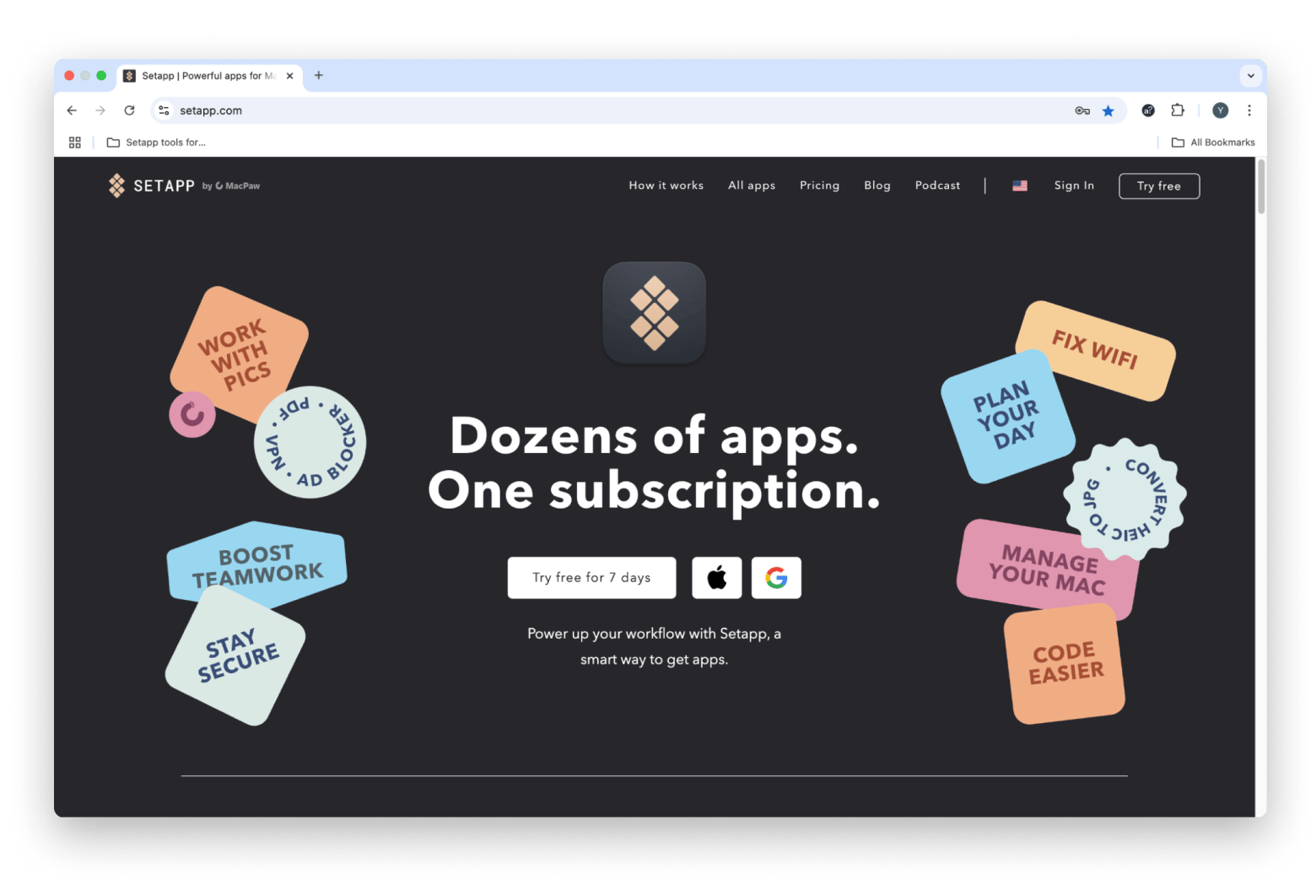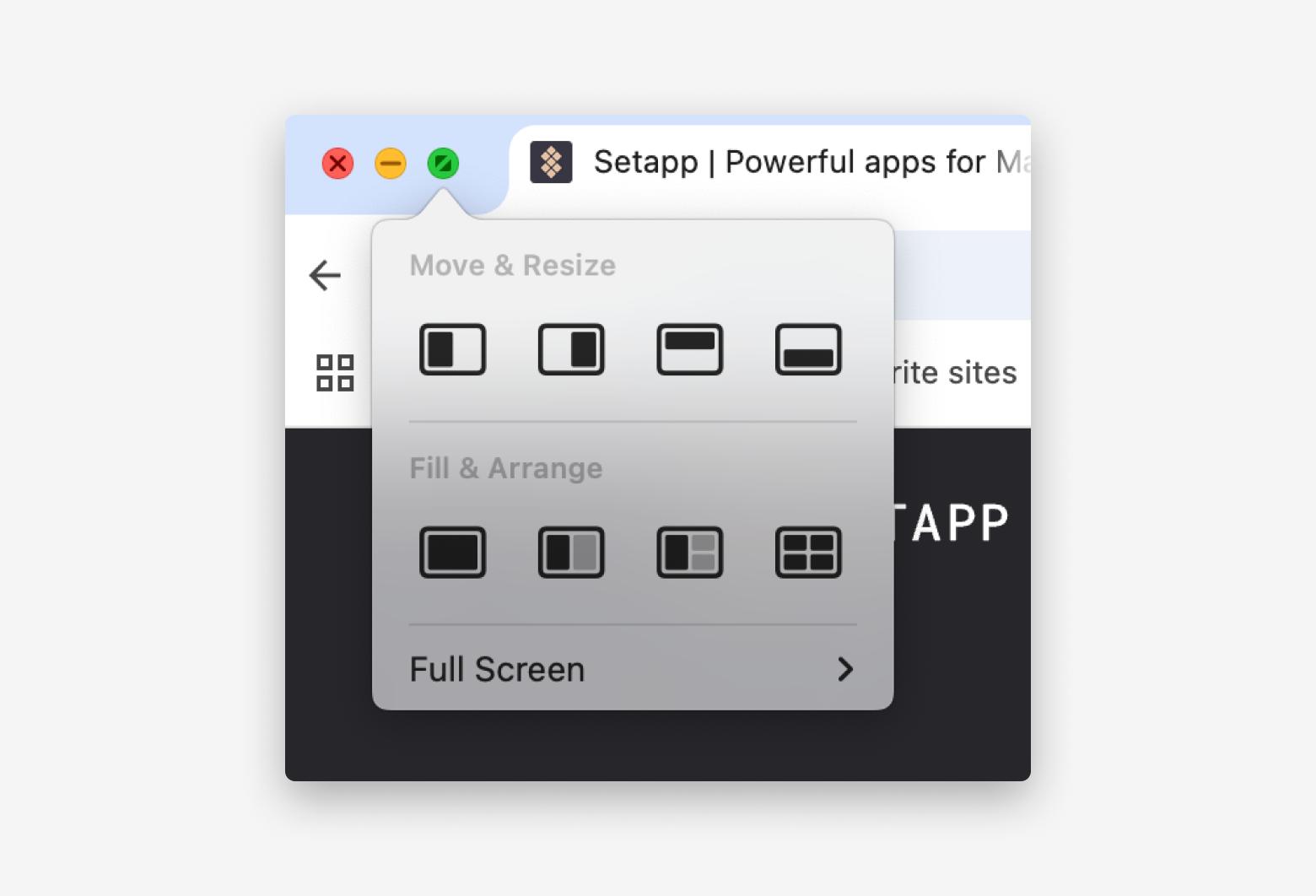How to enter and exit full screen on a Mac: The quickest ways I use
No matter what size screen your Mac has, knowing how to get into and out of full screen mode for your apps is essential. Even with the largest external monitors, we often find ourselves putting apps in full screen on Mac to stay more focused on a task at hand.
Here, we’ll show you how to enter full screen mode, how to exit full screen, and showcase some apps that can help you make the most out of full screen mode.
What is full screen mode on Mac?
Mac’s full screen mode expands an app to fill the entire screen so that you can work distraction-free. When an app enters the full screen, only the top menu is visible, while the Dock is hidden. If you use Chrome, you’ll also find the browser tabs and address bar hidden in full-screen mode.

When to use a full screen shortcut?
Anytime! Definitely every time you watch Netflix. Also, when you’re working, sometimes. Here are a few examples of when full screen might be useful:
- Focused attention. Having a bunch of apps open on one desktop can be confusing. Placing the ones you need most in full screen mode allows you to focus, and swiping between desktops is better than pinching to get to your control center, then finding the app you need.
- Side-by-side productivity. You can use two apps in full screen mode on one display, allowing you to compare data points or do things like drag and drop images from one app to another with ease.
- Editing photos. If you’re getting granular with photo editing, you should consider full screen mode on your Mac. You get far more screen real estate in full screen, allowing you to hone in on small details, and see your edits on a larger screen.
- Multitasking on multiple screens. Those with multiple monitor setups also love full screen mode for Mac! It allows you to have a dedicated space for each app, or apps, and have multiple full-screen or half screen apps in view. If you use an app like Mosaic or Swish, you can get even more control over your desktop setup and full screen apps.
How to go full screen on a Mac
There are a few ways to go full screen for Mac apps:
- In an app’s window, click the green button on the top left
- While using an app, press Command + Control + F or Fn + F if your Mac is running macOS Monterey or later. On Big Sur and earlier, only Command + Control + F works.
- In the app’s menu, select View, then choose Enter Full Screen from the drop-down menu.
In macOS Sequoia, there’s also a great feature that lets you tile windows, so you can view up to four apps in full screen at the same time:
- Hover over the green icon on the top left of your window
- Select a layout under Fill and Arrange.
- The active apps will be automatically fitted to the selected layout.

If you want to split your screen into more than four workspaces and customize your window layouts as you wish, grab Mosaic.
The Mosaic app for Mac allows you full customization on how you put apps in full screen mode, and how to arrange your screen if you want apps to share full screen mode on your Mac. You can even define the precise area you want an app to occupy on your screen!
All you have to do is drag an app window and Mosaic will trigger the layout options. Drop your window on a layout — and that’s it! The app also has user-defined keyboard shortcuts for all settings, including grids you set up. Mosaic works with multiple monitors, and even an iPad you have connected to your desktop.
How to switch apps in full screen mode
If you’re viewing a window in full screen but then want to move to a different window, simply swipe right or left on your Trackpad with three or four fingers. You can always customize your Trackpad gestures (and not just Trackpad, any input device!) using BetterTouchTool.
If BetterTouchTool feels a bit too confusing, try Trackpad automation with Swish.
Swish is fully focused on gestures. The app has 28 built-in gestures you can take advantage of for managing full screen mode on Mac. There are some super clever features like pinching an app to quit, swiping down to minimize, and pinching away from the center of your trackpad to go full screen. The app also works with multiple monitors.

If you’re more prone to swipe around your screen than use keyboard shortcuts or a full screen hotkey, Swish is for you.
How to exit full screen on a Mac
The method to exit full screen Mac is also simple. If you’re asking yourself, “How do I get out of fullscreen mode?” Here are your options — and they’re mostly the same as entering full screen:
- In an app’s window, click the green button on the top left
- While using an app, press Command + Control + F or Fn + F if your Mac is running macOS Monterey or later. If your Mac runs on Big Sur and earlier, press Command + Control + F to exit full screen.
- In the app’s menu, select “View,” then choose “Exit Full Screen” from the drop-down menu.
Now you know how to get out of full screen Mac mode! Keep in mind if you need to know how to minimize screen on Mac computers, you can’t do it from full screen. The option to minimize disappears, as your Mac considers a full screen app as its own desktop.
Enhance Mac window management with Setapp
Full screen mode for Mac is amazing, and we suggest everyone give it a shot. It will make you more productive, and most apps are just better in full screen mode.
Swish, BetterTouchTool, and Mosaic can help you take more control of your Mac’s display options, including full screen, and using them will leave you wondering why they aren’t built into macOS! Best of all, these apps are available for free during a seven day trial of Setapp, the world’s largest and most complete suite of Mac and iPhone apps.
When your trial ends, continued unlimited access to Setapp is only $9.99 + tax per month. It’s a sensational offer, so why wait? Give Setapp a shot today!
FAQ
What is the full screen shortcut?
If your Mac is running on Mac OS Big Sur or earlier, the fill screenshortcut is Command + Control + F to enter full screen. On Mac OS Monterey or later, you can also press fn + F or Command + Control + F. Alternatively, try Swish. It lets you go into full screen just by using simple gestures on the trackpad.
How do I switch between full screens on Mac keyboard?
To switch between full screens on a Mac keyboard, press F3 and select the app you want to switch to. You can also use BetterTouchTool to create a new shortcut that you’re more comfortable with.
What do I press for full screen on Mac?
What to press for full screen on Mac, depends on the macOS your Mac is running. Command + Control + F works for all Macs. But if your Mac runs on macOS Monterey or later, fn + F also lets you turn on the full screen mode.
How can I make my Mac screen better?
To make your Mac screen better, you can change your screen’s brightness and resolution to meet your preferences. On top of that, you can use Mosaic to arrange your apps, so you know where to always find them, full screen or not.







